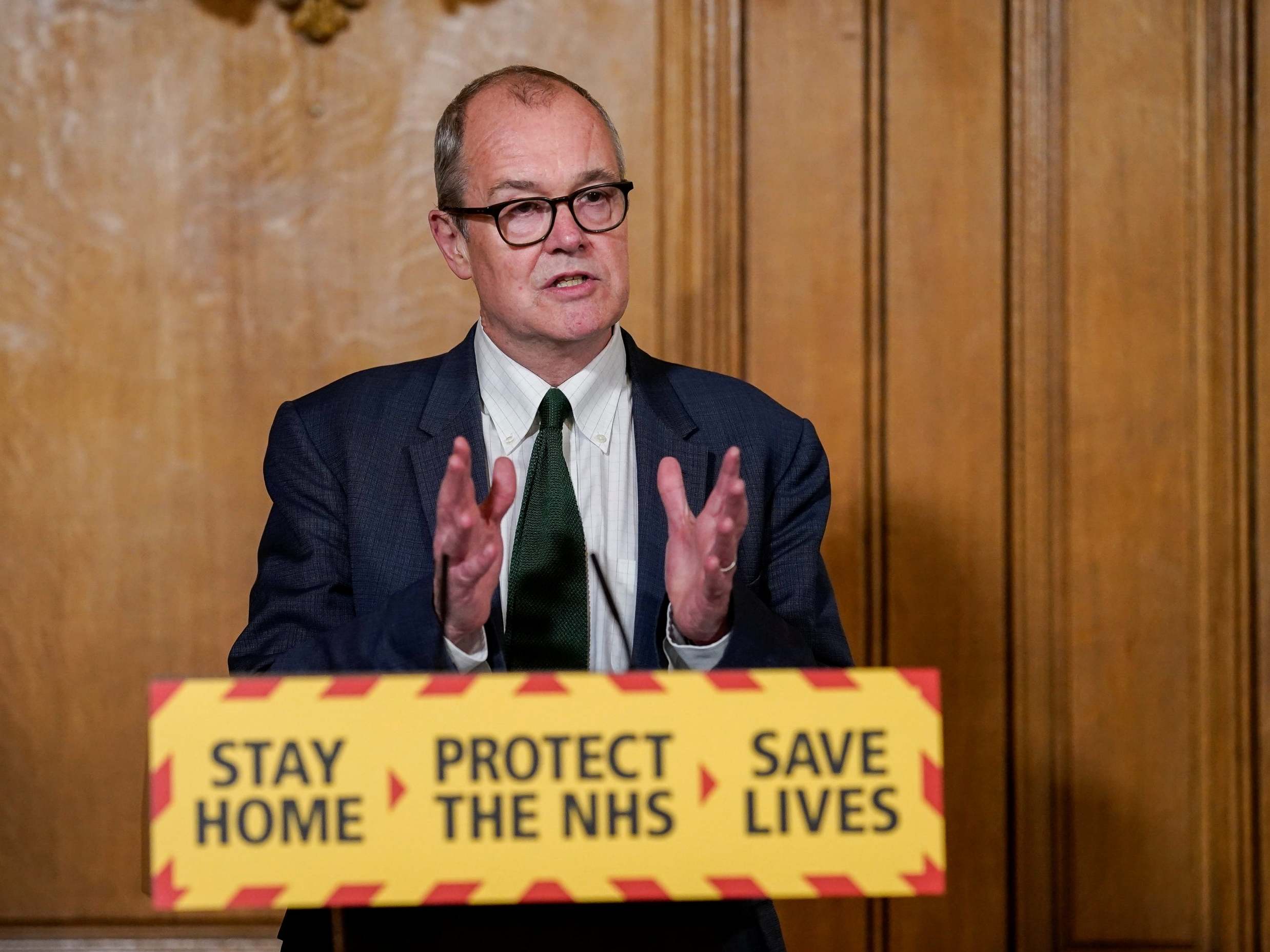Here’s what scientists have been advising ministers about coronavirus
Health correspondent Shaun Lintern examines the latest documents published by members of Sage


Ministers have been keen to stress that their decisions on how best to wrestle with the coronavirus outbreak have been based on scientific advice provided by members of Sage, the Scientific Advisory Group for Emergencies, chaired by UK chief scientific adviser Sir Patrick Vallance.
The group has been shrouded in secrecy for most of the coronavirus outbreak with its membership, bar two, only fully published this week after reports the prime minister’s chief adviser Dominic Cummings had attended meetings.
On Tuesday the government published 16 papers and minutes from the Sage meetings going back to 4 February. Here is what we have learned:
No super spreader
A genetic analysis of 260 coronavirus cases from across the UK identified 12 separate genetic variations of Sars-CoV-2 virus. A report to Sage dated 23 March said: “The data is consistent with a large number of independent Sars-CoV-2 introductions to the UK, from multiple locations around the world.
“Major import to the UK seems to have occurred from locations with large epidemics and high travel volumes, notably Italy and other parts of Europe.”
It said the number of separate independent introductions of the virus to the UK was likely to be substantially higher than the initial 12 identified versions of the virus.
The Covid-19 Genomics UK Consortium, established in just 12 days in March, includes health agencies, universities and the Wellcome Sanger Institute. The paper said the consortium would attempt to study patient health records in a bid to see how the different variations spread and affected patients.
Lifting of lockdown restrictions
On 2 April, scientists discussed the behavioural issues around easing restrictions in the UK and how that might be achieved. The paper warns any sudden lifting of lockdown controls could lead to a surge in cases and would require the restrictions to be put back in place which would harm public confidence.
The paper said: “If strict restrictions are retained for months and then abruptly eased and people are told it is safe to resume social contact, they will expect this to mean that the risk of infection has ceased or significantly reduced. If there is then an increase in infection rates that necessitates a reintroduction of restrictions this is likely to be seen as a serious failure of policy and trust in public health advice will be lost.”
The experts recommended “easing restrictions very gradually” in trial periods to gather evidence on the effect, then use that to convince the public of what was needed. This may have paved the way for ministers to adopt the “new normal” narrative in recent weeks, with ministers stressing there was unlikely to be any sudden lifting of lockdown.
Intriguingly, the paper hints at pilot projects to lift lockdown in areas where the infection is less severe. The government has yet to set out its strategy for lifting lockdown.
A whole section of this paper has been redacted by the government. When asked why some of the document remained secret, the prime minister’s official spokesman said: “We will publish all of the evidence in the coming weeks and months. Some evidence remains under live consideration before policy decisions have been made by the government and as such, it wouldn’t be appropriate to publish at this time.”
They said publishing information now could confuse the public, adding: “The only redactions are for advice still under development or where contact details have been removed.”
Handshaking and social distancing
On 3 March, Sage discussed the potential use of social distancing measures and isolation that was to form the bedrock of the government’s lockdown measures introduced on 23 March.
A report warned: “There was agreement that government should advise against greetings such as shaking hands and hugging, given existing evidence about the importance of hand hygiene. A public message against shaking hands has additional value as a signal about the importance of hand hygiene.”
On the same day, prime minister Boris Johnson made a point of telling journalists in Downing Street: “I was at a hospital the other night where I think a few there were actually coronavirus patients. And I shook hands with everybody, you’ll be pleased to know, and I continue to shake hands.”
Delays to lockdown
On 2 March, scientists at Sage warned ministers: “It is highly likely that there is sustained transmission of Covid-19 in the UK at present. It is almost certain that there will be sustained transmission in the UK in the coming weeks.”
The paper to Sage also warned about the mortality rates and impact on hospitals, saying as many as 44 per cent of those aged over 80 could be admitted to hospital, 8 per cent of those infected overall. It warned: “Current estimates are that mortality rates are 12 per cent for hospitalised people, from 4 per cent in the under 50s to 20 per cent of over 80s, with 50 per cent mortality in those hospitalised who require invasive ventilation.”
Sage advised as early as February that imposing restrictions on people using bars and restaurants would have a significant effect on any epidemic, although it advised the effect on large gatherings was lower.
The UK government did not bring in full restrictions until 23 March.
The value of antibody tests
A paper to Sage dated 23 March also reveals concerns about the use of antibody tests to determine whether people have been infected with coronavirus and have become immune. Such tests are likely to be crucial in helping to ease restrictions.
But scientists said even with tests as accurate as 99 per cent some errors will still creep in. Out of 1000 tests, as many as 28 per cent of people who are told they are immune could still be at risk.
The paper also warns about people being discriminated against based on antibody results by their employers while others may try to game the system with illegal tests and false results.
Join our commenting forum
Join thought-provoking conversations, follow other Independent readers and see their replies
Comments